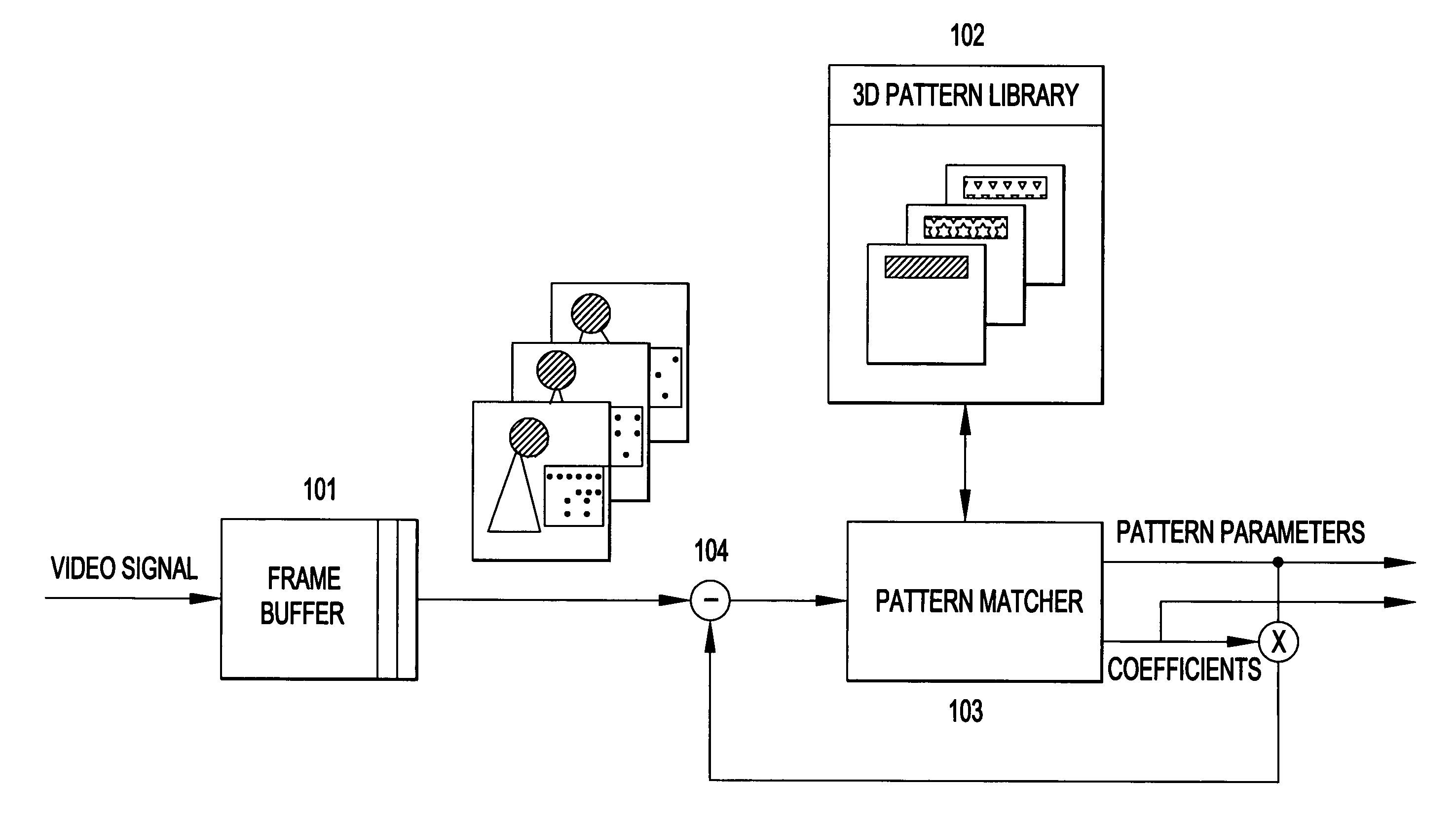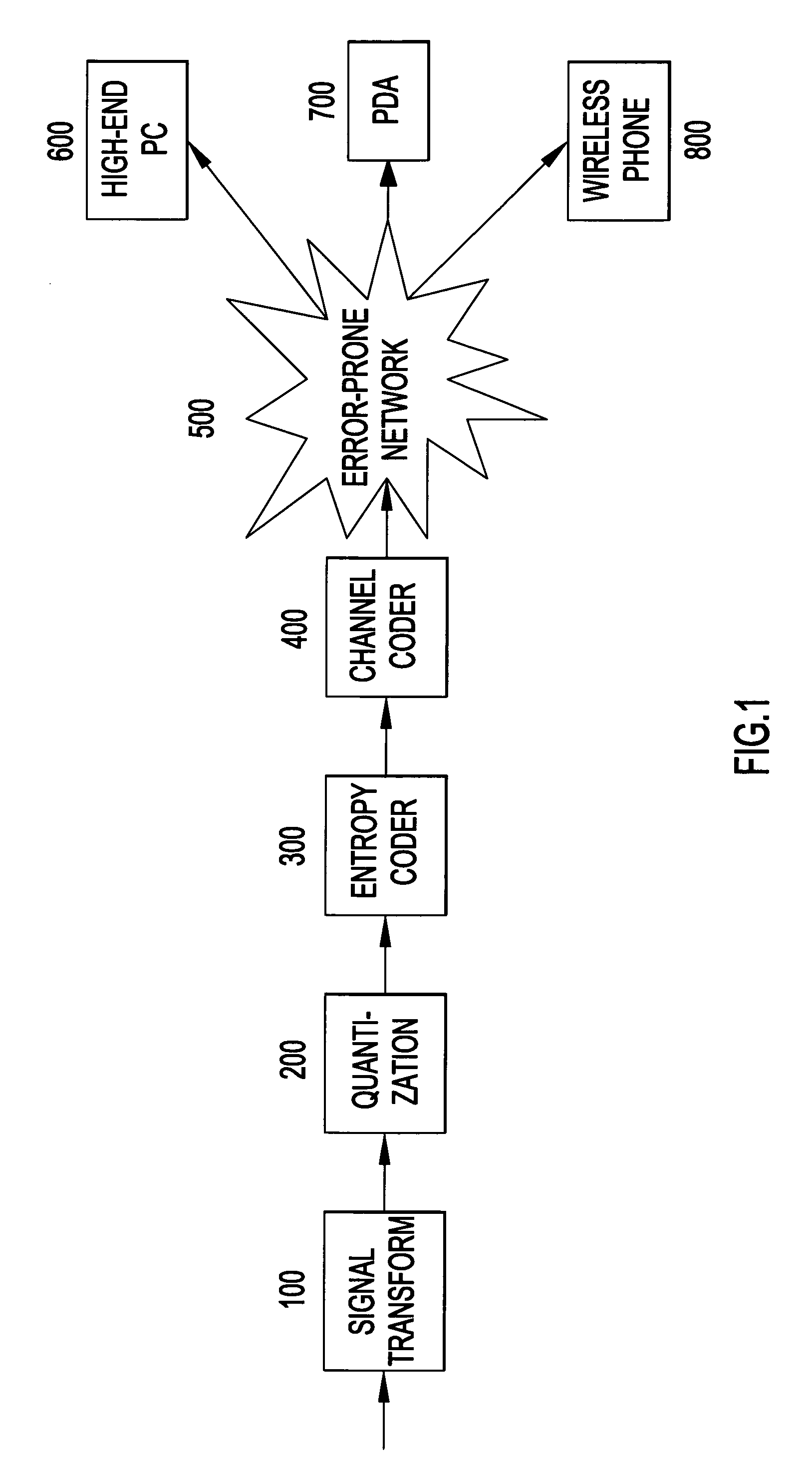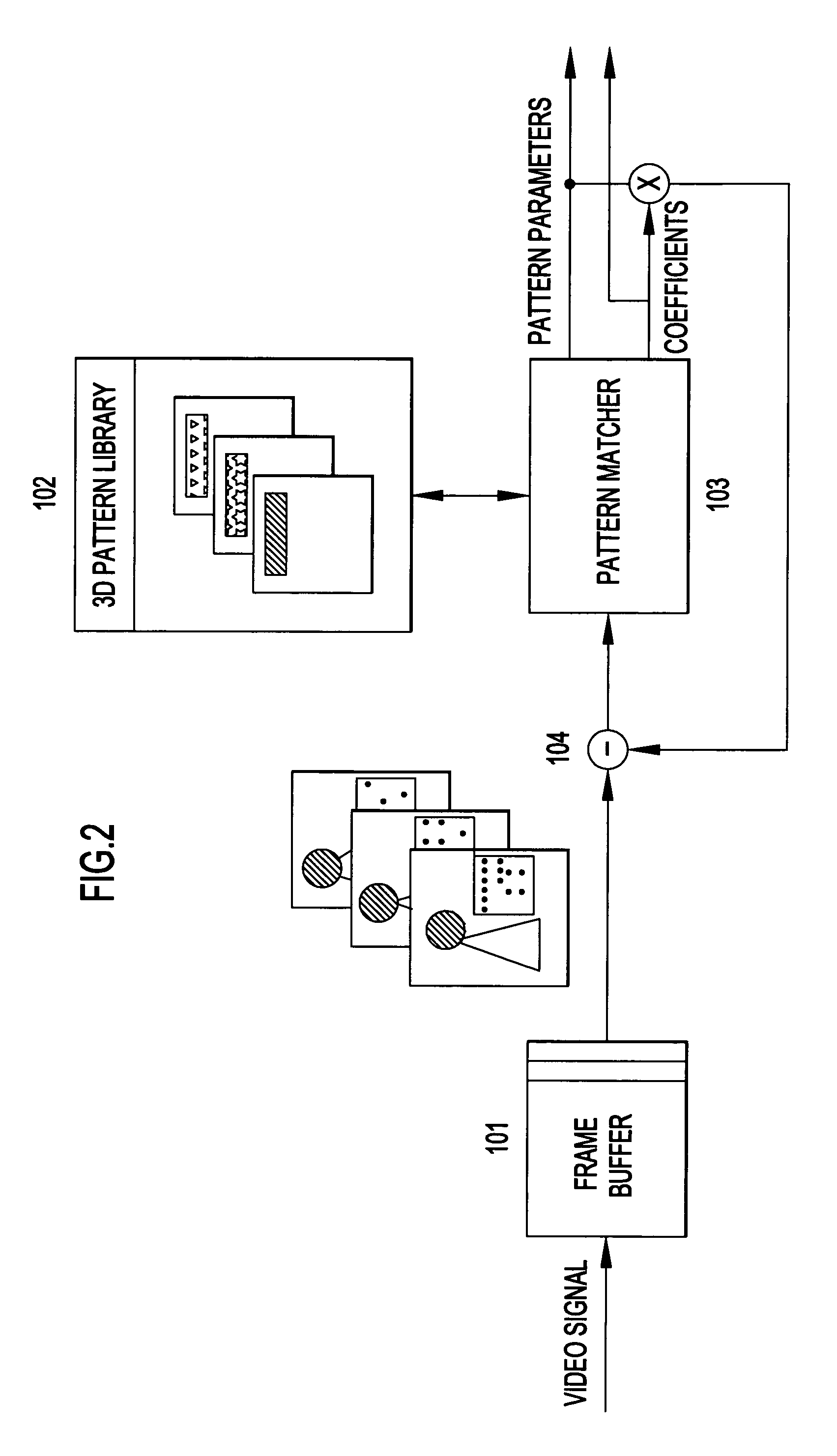System and method for encoding three-dimensional signals using a matching pursuit algorithm
a three-dimensional signal and pursuit algorithm technology, applied in the field of digital signal representation, can solve the problems of non-orthogonal transform encoding complexity, dictionaries do not, and the data loss is easy to be easily damaged, so as to improve the source coding quality, improve the source quality, and the effect of high data loss resistan
- Summary
- Abstract
- Description
- Claims
- Application Information
AI Technical Summary
Benefits of technology
Problems solved by technology
Method used
Image
Examples
Embodiment Construction
[0019]The present invention alleviates the problems related to hybrid DCT / motion prediction coding by using a 3-D matching pursuit algorithm. The invention defines a separable 3-D structured dictionary. The resulting representation of the input signal is highly resistant to data loss (non-orthogonal transforms). Also, it improves the source coding quality versus decoding requirements for a given target bit rate (anisotropy of the dictionary).
[0020]Matching Pursuit (MP) is an adaptive algorithm that iteratively decomposes a function ƒ∈L2() (e.g., image, video) over a possibly redundant dictionary of functions called atoms (see FIG. 3). Let D={gγ}γ∈Γ be such a dictionary with ∥gγ∥=1. ƒ is first decomposed into:
ƒ=<gγ0|ƒ>gγ0+Rƒ,
where γ0|ƒ>gγ0 represents the projection of ƒ onto gγ0 and Rƒ is the residual component. Since all elements in D have a unit norm, gγ0 is orthogonal to Rƒ, and this leads to:
∥ƒ∥2=|<gγ0|ƒ>|2+∥Rƒ∥2.
In order to minimize ∥Rƒ∥ and thus optimize compression, o...
PUM
 Login to View More
Login to View More Abstract
Description
Claims
Application Information
 Login to View More
Login to View More - R&D
- Intellectual Property
- Life Sciences
- Materials
- Tech Scout
- Unparalleled Data Quality
- Higher Quality Content
- 60% Fewer Hallucinations
Browse by: Latest US Patents, China's latest patents, Technical Efficacy Thesaurus, Application Domain, Technology Topic, Popular Technical Reports.
© 2025 PatSnap. All rights reserved.Legal|Privacy policy|Modern Slavery Act Transparency Statement|Sitemap|About US| Contact US: help@patsnap.com



